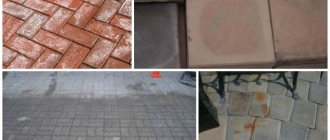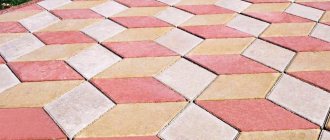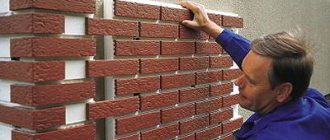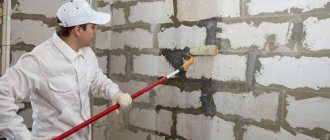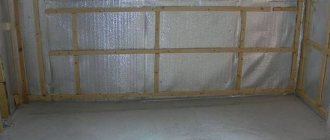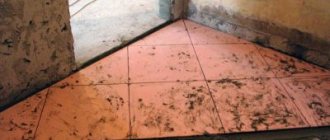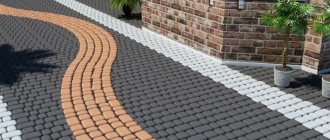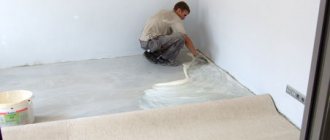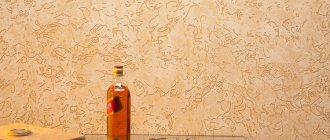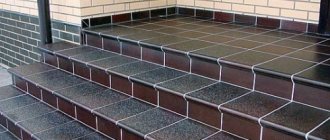Paving slabs can often act as an important detail of the landscape, emphasizing certain points and highlighting them. For this, both colored tiles and paving stone paint can be used, which can give the path the required color.
However, choosing the second option is associated with certain requirements for both the dye and application. This is exactly what we will talk about in the article below.
Photo of how you can paint paving stones, giving them a wide variety of colors
Types of dyes for paving slabs
The tiles are painted using a coloring pigment - a special powder that does not dissolve in water. Such substances are divided into mineral and organic. In addition, many experts advise painting tiles with alkyd and rubber paints and varnishes.
Dyes for paving slabs
Rubber dyes are one of the latest achievements in paint and varnish production. The quality of colored tiles painted in this way will be no worse than the finished production analogue.
Advantages of rubber dyes:
- fire resistance;
- wear resistance, which includes resistance to UV rays and other factors;
- rubber paints are not afraid of high temperatures and frosts, thus the color of the painted tiles remains saturated for a long time;
- unlike other types of dyes, rubber paints and varnishes do not have a specific odor, which is characteristic of traditional paints;
- the dye is harmless and, most importantly, creates a non-slip surface.
Alkyd dyes:
Advantages:
- their main advantage is an increased degree of resistance to chemicals and changes in atmospheric pressure;
- alkyd dyes protect the tile itself from premature destruction, thereby extending the overall service life of the material.
The only significant disadvantage of such paints is their pungent odor , which retains its effect for a long time.
Polyurethane paint:
Polyurethane paint also has improved performance characteristics, such as resistance to temperature changes . This type of dye for paving slabs has protective properties that protect the tiles from destruction. The disadvantage of polyurethane is the possibility of color changes during operation.
Powdered dyes:
Among the powdered dyes are the following:
- Metallic (they are based on copper, bronze and zinc alloys. Metal powdered substances are obtained from them.
- Natural origin - such pigments are obtained from rocks by grinding and processing them. This paint is considered the most expensive.
- Chemical - such dyes are created from synthetic substances obtained through complex chemical reactions. This dye is the most popular, as it has high performance properties (wear resistance, dispersion-density) and is not very expensive.
LiveInternetLiveInternet
Saturday, August 25, 2012 14:13 + to quote book Paints for paving slabs, paving slabs, painting of paving slabs. Veresk 2007 Paving slabs are most often used to form pedestrian sidewalks. However, despite the traditional aesthetic properties that are inherent in concrete, natural reliability, and service life, you can improve its properties with the help of paving exterior paint. The fact is that this paint is made on the basis of polyurethane modified alkyd resins, which simultaneously reduce the slipping of paving slabs and make them easier to clean, and also reduce the possibility of slipping, which significantly increases the safety of your sidewalks. Painted paving slabs will last much longer than paving slabs that were simply treated with an external sealant. However, you must understand that as part of your paver maintenance, it will eventually need a new coat of exterior paint. Instructions for painting paving slabs Step 1. Preparing paving slabs Prepare the surface of the paving slabs for the upcoming painting. To do this, you need to remove dirt and sand from the paving slabs using a stiff brush or dry and wet vacuuming. As a final solution, spray down the pavers with a garden hose and then allow the pavers to dry completely. You can use a pressure washer for better cleaning results on paving slabs, however you must be sure that you know all aspects of the correct use of a pressure washer, otherwise you risk damaging the surface of the paving slabs. Step 2: Maintain Paving Paint Stir the paving paint regularly using a flat paint stirrer throughout the paver painting process. The selected paint and stain for paving slabs retain their properties for a long time. Step 3. Concentration of paving paint Dilute the first layer of paving paint with 20 percent mineral turpentine. This solution will help the paint adhere better to the tiles of your sidewalk or driveway. You can do this in a separate paint tray or bucket. Apply a second coat of paving paint if necessary. Step 4: Applying Paver Paint Apply all coats of paver paint using a brush or short-haired roller, then allow each coat of paint to dry completely, which will take about six hours, before applying the next coat of paint. Tips and warnings Before you start painting paving slabs, check the weather conditions during construction work. Do not pour unused or used paving paints, along with turpentine, down the drain or into the sink. Please dispose of these materials responsibly.
Cited 2 times
Like share
0
Like
- I liked the post
- Quoted
- 0
Saved
- Add to quote book
- 0
Save to links
Liked
0
Types and brands of tile dyes
Powder dyes are sold in bags. The cost of chemical dyes ranges from 65 to 120 rubles per bag. The price in this case will depend entirely on the color. Pigments of the red-orange palette will be the cheapest, while blue or purple powder will cost an order of magnitude more - 100 - 110 rubles per kg.
This difference in price is due to the fact that all of these dyes are based on iron oxide , which has an orange-red color. Thus, the manufacturer does not need to attract additional investments to create this kind of shades. When producing green or blue dyes, additional pigments are added to the solution, giving the powder the required color.
The most famous manufacturers of dry coloring powders are (Germany) and Omnikon (Denmark). The price range of the German company ranges from 80 to 430 rubles per kilogram. The Danish company offers consumers to purchase coloring pigments at a price of around 130 rubles (green color is not sold).
It should be noted that liquid paint (polyurethane or rubber) does not cost much less. For example, the Russian market sells rubber paint at a price of 180 rubles per kilogram. Alkyd paint is one of the cheapest, it can be purchased at a price of 50 rubles/kg.
Rubber based paint
latex dispersion of acrylic copolymers
for external and internal work
Rubber paint “Kolorit” is unique in its performance properties: its latex base is capable of stretching and shrinking, without damaging the structure of the coating.
Elasticity, wear resistance, weather resistance - these properties allow the use of rubber paint for the most difficult substrates: concrete, wood, plaster, plastered surfaces, old paintwork.
Unique properties of rubber paint:
- wear-resistant, crack-resistant, highly elastic - the service life of the coating is 10 years!
- creates a non-slip coating
- weatherproof: withstands strong temperature changes: from -40 0C to +150 0C
- waterproof: waterproofs the surface
- environmentally friendly: odorless, does not contain harmful substances
- fireproof - fire hazard class KM1
- wide range of colors - 190 colors and shades according to the RAL catalog
- economical consumption - 300 g/sq.m. taking into account two layers
Purpose of rubber paint:
- for concrete floors and walls in garages, warehouses, car services, car washes, workshops
- for concrete stairs, platforms, ramps
- for paving slabs, borders
- for plinths and building facades
- for concrete pools
- for floors in sports halls
- for walls and ceilings in residential and industrial areas with high humidity
- for wooden floors and other wood products
- for all types of roofing: slate, metal profiles and tiles
- for brick, gas-cement, aerated concrete blocks
- for gypsum products
- for children's, medical institutions and catering units.
Color palette: 190 colors and shades according to the RAL catalog
Rubber paint consumption: 300g/sq.m. (including two layers).
Packing: 5 kg bucket.
Price: 2400 rub. (5 kg bucket), the price includes coloring.
APPLICATION INSTRUCTIONS:
Before use, the paint must be stirred thoroughly.
It is recommended to apply the paint in two layers at a temperature of at least 5 degrees Celsius. The paint is applied with a brush, roller or spray gun onto a dry, clean, dust-free surface. We recommend pre-treating highly absorbent or dusty substrates with Kolorit primer in one layer.
Apply the first coat of paint, let dry, then apply the second coat. The drying time for each layer of paint before subsequent application is at least 4 hours at a temperature of +20C; at lower temperatures the drying time increases. Drying time before use is at least 12 hours at a temperature of +20C. The time for complete polymerization of the coating is 14 days.
To paint concrete pools, we recommend using only rubber paint without prior priming.
Proper preparation
Thorough cleaning of tiles before painting
The quality and effectiveness of painting directly depends on how correctly you prepared the surface for applying color.
Preparation includes:
- removal of dirt and dust;
- cleaning joints between tiles;
- drying the surface.
Advice. To effectively combat dust and small pollutants, it is recommended to use a regular vacuum cleaner, which will remove even the smallest fractions of dirt. Remember - a small speck can cause significant harm to your work.
Painted paving slabs in the garden
Since paving slabs are located primarily outdoors and in the open air, it is extremely important what the weather will be like when you work. (See also the article Exterior decoration of the house: options.)
Please note the following features:
- some types of paints are not recommended to be applied at air temperatures below +10 degrees Celsius;
- you need to work strictly in dry weather;
- in some cases, a strong wind can also interfere, since it will constantly throw fresh dust and debris onto the surface.
Finishing operations
Fluorescent compounds are often used in conjunction with a phosphor to border or illuminate the surface. This gives a very beautiful flashing effect when the sidewalk is illuminated by a source of ultraviolet radiation invisible to the eye.
At the final stage of production, the frozen luminous mixture must be coated with a protective compound based on transparent varnishes or liquid glass. In home production, transparent solid varnishes are used for exterior use. If you want to get a glass-smooth surface of a luminous sidewalk, you will need to apply a protective mixture in 3-4 layers, with a total thickness of 2 mm, and then cover the surface with glass treated with silicone grease. After 4-5 hours, the glass is removed, and the hardened mixture of protective varnishes is placed in a dry room for a day.
Painting the finished coating
Let's consider another situation. You already have a coating, perhaps of a certain color, you need to paint it. Maybe you want to improve its properties, increase its aesthetics, or you are simply tired of the color or want to create an original composition. Then the approach is taken a little different.
So, how to paint paving slabs with your own hands:
- You prepare the surface. You shouldn’t even think about painting dirty paving stones; the result will be unsightly. First, the dirt is swept away, then the remains are removed with a vacuum cleaner, then water washes away everything that was not removed in the previous stages.
- The paint is being prepared. Usually it comes with instructions showing what the composition of the mixture should be. It is worth preparing it in advance. Too thick tile mixture can be thinned using turpentine or solvent.
- Painting is carried out in several layers. Ideally, the first layer should be made of a liquid solution so that it plays the role of an improvised primer for subsequent layers.
- Paint is applied step by step. The work is carried out with a roller or brush. When laying the tiles evenly, the work is simplified; you simply paint over it entirely with a roller, making adjustments with a brush. A brush is the easiest option for painting the seams between paving slabs.
Please note that the next layer must be applied only after the first has dried, so the work may take several hours.
Leave everything to dry for approximately 6 hours. Do not step on the paint at this time; if you need to get to the other side, use special boards that you can throw over the surface and walk through without stepping on it.
We make colored tiles with our own hands
To achieve a positive result, it is advisable to adhere to the following conditions:
- use the same cement for the entire batch;
- weigh all ingredients carefully;
- adhere to standard mixing times;
- use clean fresh water, controlling its quantity taking into account the content in the binder and sand;
- use additives with caution that can affect the final color of the concrete mixture;
- Clean all equipment thoroughly before using pigments of other colors.
Before starting work, you need to prepare the concrete mixer: its inner walls should be damp, but not wet. Next, a plasticizer is prepared - thoroughly dissolved in hot (70÷80 °C) water, its amount should be about 0.5% of the dry weight of the entire solution.
The proportions of the dye for making paving slabs with your own hands are indicated approximately - at least 3% of the mass of cement, but are finally established experimentally. Before being added to the concrete solution, neither the plasticizer nor the pigment should have any undissolved lumps or sediment. If they end up on the surface of the product, this will lead to the formation of shells.
The concrete mixer is turned on, a pre-measured amount of water is poured into it, cement is added, after mixing it, fillers are added and lastly the plasticizer and pigment suspension are poured in.
Price
The popularity of colored concrete products is quite high, therefore, on the Russian construction market, coloring substances from different manufacturers are presented in a wide range. Buying pigment for paving slabs in Moscow is not difficult. The table shows wholesale prices for dry dyes for concrete.
| Manufacturer | Name | Color | Price, rub/kg | Package weight |
| Lanxess concern “BAYER” (Germany) | IOX R-03 | red | 88 | 25 |
| IOX Y-02 | yellow | 97.50 | 20 | |
| IOX B-03 | black | 88 | 25 | |
| Bayferrox 686 | brown | 134 | 25 | |
| Bayferrox 960 | orange | 150 | 20 | |
| Bayoxide CGS | green | 408 | 25 | |
| Bayferrox 110 | red | 132 | 25 | |
| Omnicon (Denmark) | RE 7130 | cherry red | 105 | 25 |
| RE 6110 | red | 105 | 25 | |
| YE 6420A | yellow | 111 | 25 | |
| YE 2967 | sand | 121 | 25 | |
| YE 2960 | yellow-orange | 122 | 25 | |
| BR 6862 | dark brown | 105 | 25 | |
| BR 6610 | light brown | 105 | 25 | |
| Fepren (Czech Republic) | Y-710 | yellow | 112 | 15 |
| HM-470 | brown | 96 | 25 | |
| BP-510 | black | 96 | 25 | |
| TP-303 | red | 58 | 25 | |
| Yipin Pigments (China) | S722 | black | 47.65 | 25 |
| S313 | yellow | 54.40 | 25 | |
| S565 | green | 86.30 | 25 |
It is important to note that prices for liquid dyes for tiles are significantly (2-3 times) lower than for dry pigments.
>DIY color for concrete
